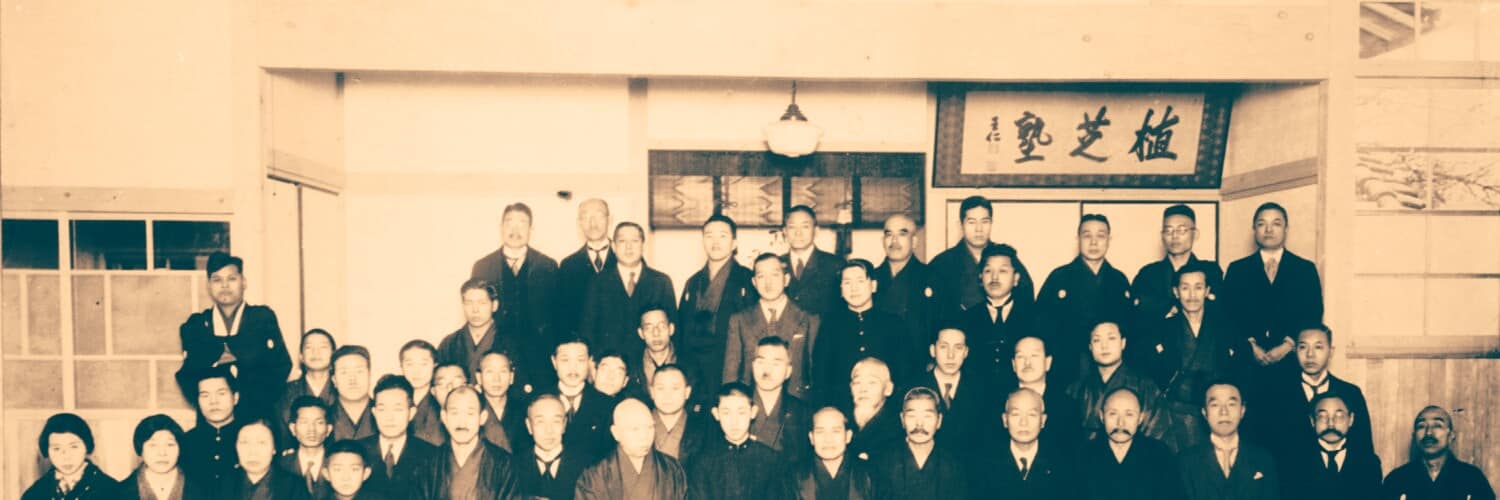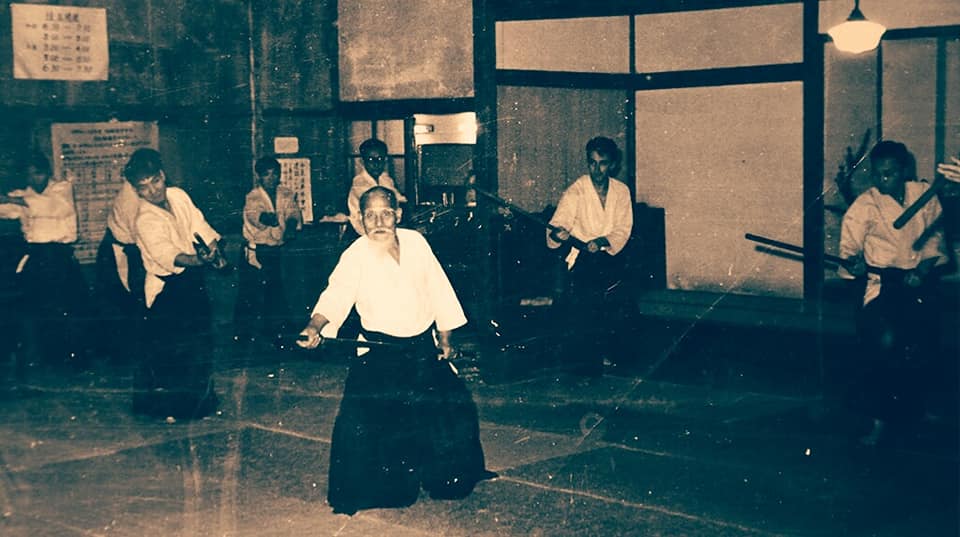Since arriving in Tokyo, Morihei has had correspondence with his master Sokaku Takeda . A unique character, he regularly visits his disciple, most of the time without warning.
Shortly before its official inauguration, Sokaku Takeda runs a seminar at the Kobukan dojo, from March 20 to April 7, 1931.
Behaving as if he were at home in the absence of a Ueshiba master, he regularly asked the young Kamada to play Shogi, a board game close to chess. Bad player, Takeda takes advantage of Hisao’s frequent absences during the game to move the pieces to his advantage.
Excellent technician but with strange behavior, Takeda sensei personally teaches the students present while asking them for money for each technique demonstrated.
Although physically removed from the Omoto Kyo sect since his arrival in Tokyo in 1927, Morihei still maintains close ties with its leaders.
On the initiative of the Reverend Onisaburo Deguchi , the national association for the promotion of martial arts, the “Dai Nippon Budo Senyokai”, was founded in August 1932. This company, created under the auspices of the sect, aims to promote of the teaching of master Ueshiba among the disciples of this important religious community which has installations throughout the country.

Hisao Kamada is sent as an assistant instructor to the sites of Kameoka , the administrative seat of the sect, and Takeda, the seat of Budo Senyokai.
Open to all, the teaching is adapted to different types of students. Ueshiba’s Aiki-Jujutsu is becoming very popular and the number of students is increasing sharply, especially at Takeda headquarters. In this district, located in the prefecture of Hyogo, a dojo of one hundred and fifty tatamis welcomes between seventy to eighty practitioners at each training.
Hisao Kamada runs initiation camps there for future uchi deshi and only rarely returns to the central dojo in Tokyo. He concentrated his activity in the region for several years by teaching and giving lectures in different dojos. Like other assistants such as Inoue, Yukawa and Funahashi, Kamada greatly contributes to the dissemination of art in the country where seventy-five dojos affiliated with Budo Senyokai will ultimately be created.
Japan, led by the military caste, pursued an expansionist policy and invaded North China in 1934, a few months after leaving the League of Nations.
Following the second Omoto incident , the Budo Senyokai was dismantled in 1935, master Ueshiba narrowly escaped arrest and was forced to break off relations with the sect so as not to be worried. Hisao leaves the Takeda dojo.
In 1936, he was incorporated into the sixth regiment of the Imperial Japanese army and stationed in Wakayama until his demobilization in 1938.
Upon his return to civilian life, Kamada must assume financial responsibility. He asked to be exempt from training and gave up the practice of Aiki-Jujutsu.

After a brief period in Mongolia, he moved to Shanghai where he became an ice cream seller.
In China, he finds his former partner Ikkusai Iwata and helps him as an assistant instructor in his dojo, branch of Kobukaï, opened in 1940.
The two men taught in this city until the end of the Second World War and the capitulation of Japan in September 1945.
Upon his return to Japan in 1946, Hisao left to live in the city of Osaka.
He definitively gave up the practice and took care of a leather goods business.
Always respectful and close to the Ueshiba family, Kamada takes part in the meetings of the former pre-war uchi deshi organized by the Doshu Kisshomaru Ueshiba once or twice a year. He finds on these occasions the partners of his beginnings Ikkusai Iwata, Minoru Mochizuki, Shigemi Yonekawa , Gozo Shioda , Rinjiro Shirata or Kenji Tomiki .
Hisao retired from professional life in 1977 and retired to the city of Ueda, located in Nagano prefecture.
Hisao Kamada died in 1986, at the age of 75.
Source: Facebook/Aikido



